Cubes in Sci-Fi Art
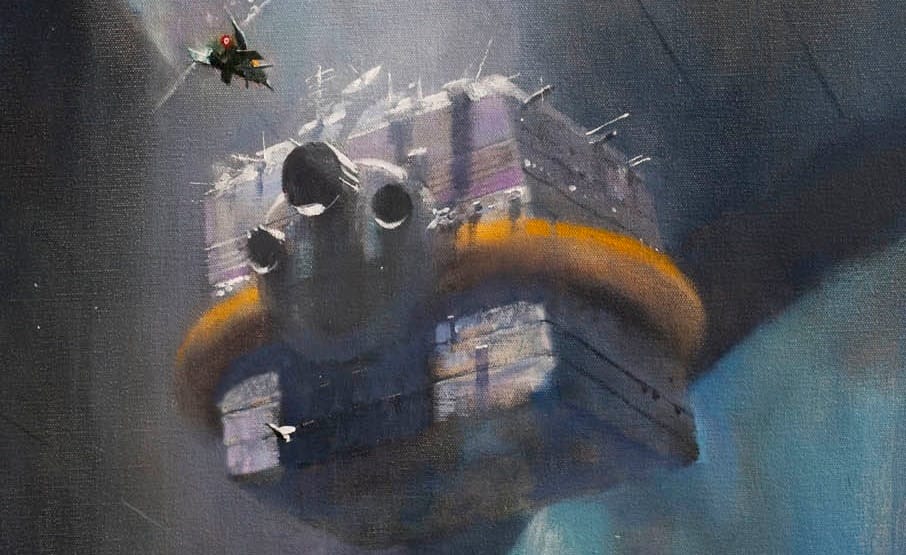
I love John Schoenherr's 1978 cover for a French edition of Keith Laumer's The Infinite Cage.
It appears to feature a surreal interpretation of the title, in the form of a glass cube containing life on Earth.
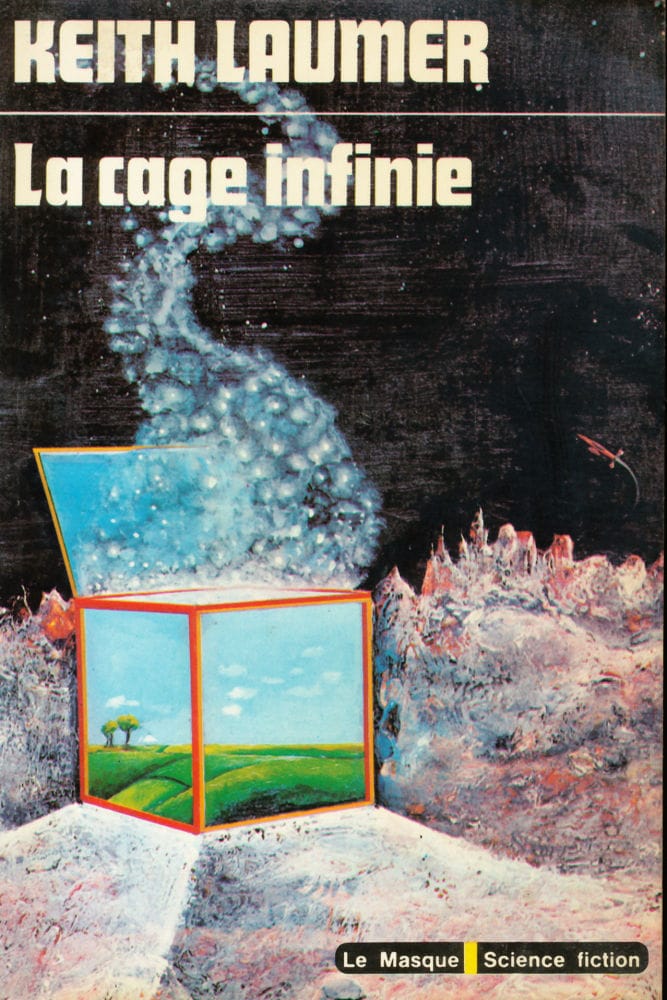
It reminds me of Paul Lehr's 1968 cover for The Santaroga Barrier, by Frank Herbert.
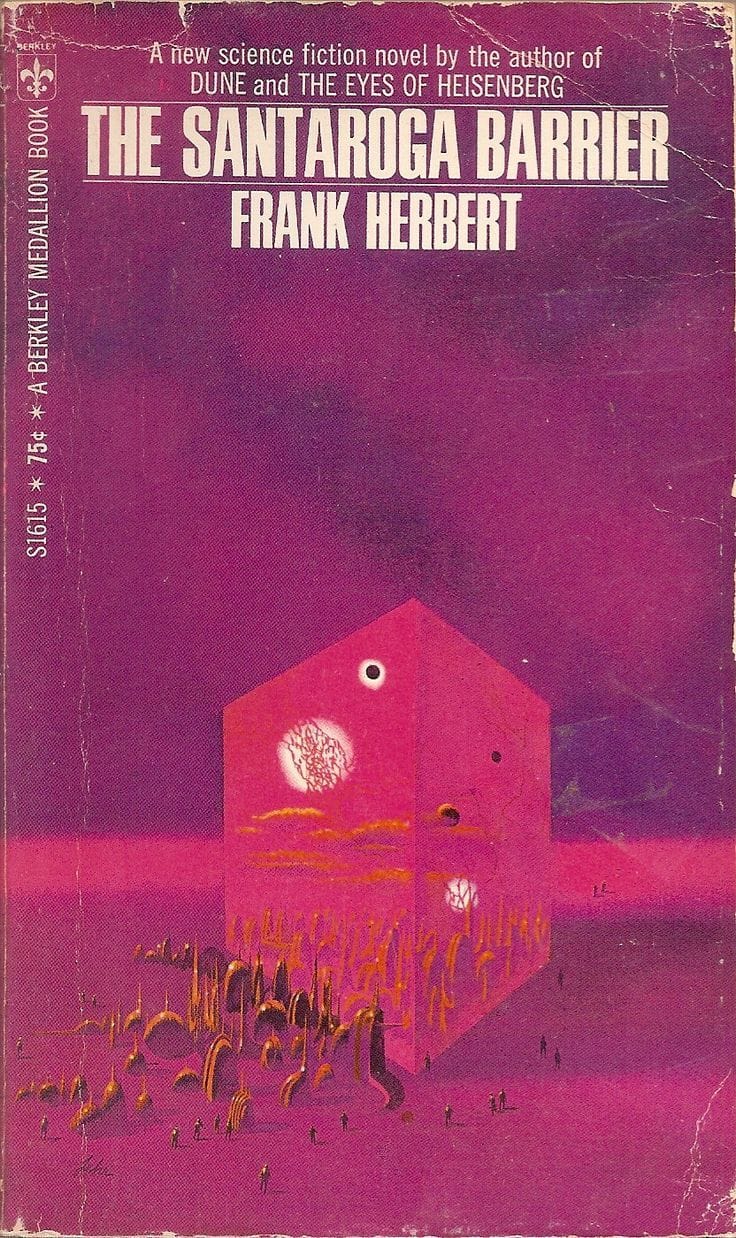
I've only done a little research, but both titles appear to be about the protagonists dealing with being accepted in the strictures of society. In Infinite Cage, the protagonist is trapped by society; In Santaroga Barrier, he's being rejected by one.
Boxed in, boxed out. Either way, your paperback cover is getting a cool surreal cube.
This post will be mostly surrealism – surrealists love a cube. That said, this 2016 John Harris cover to Mike Brooks' Dark Run is a perfectly representational spaceship cube. (And if you want more, there's always the Borg.)
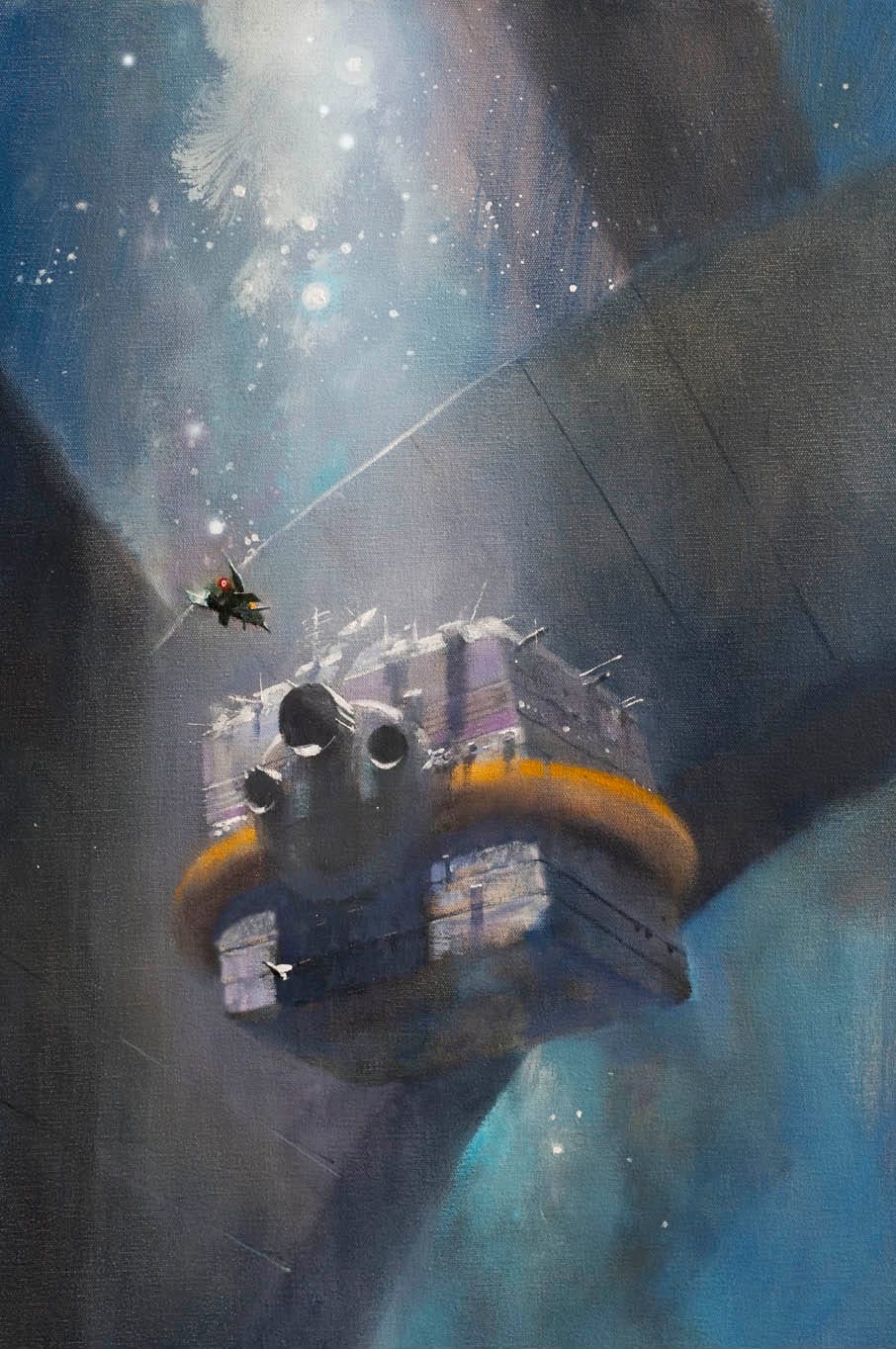
This ominous Philippe Druillet illustration really reminds me of the Borg.
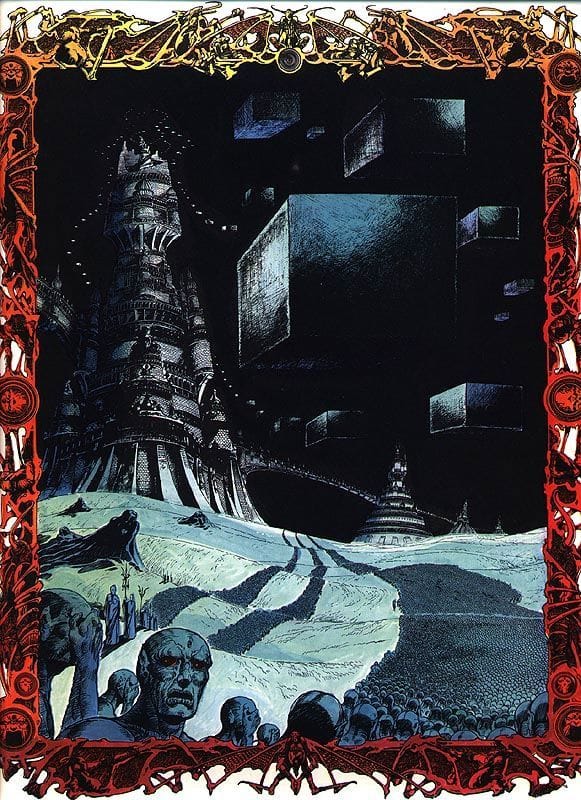
This uncredited (I'd guess it's by Henri Lievens) 1970 cover art to Univers zéro, Jacques Sternberg, is one more example of how surreal cubes can represent imprisonment.
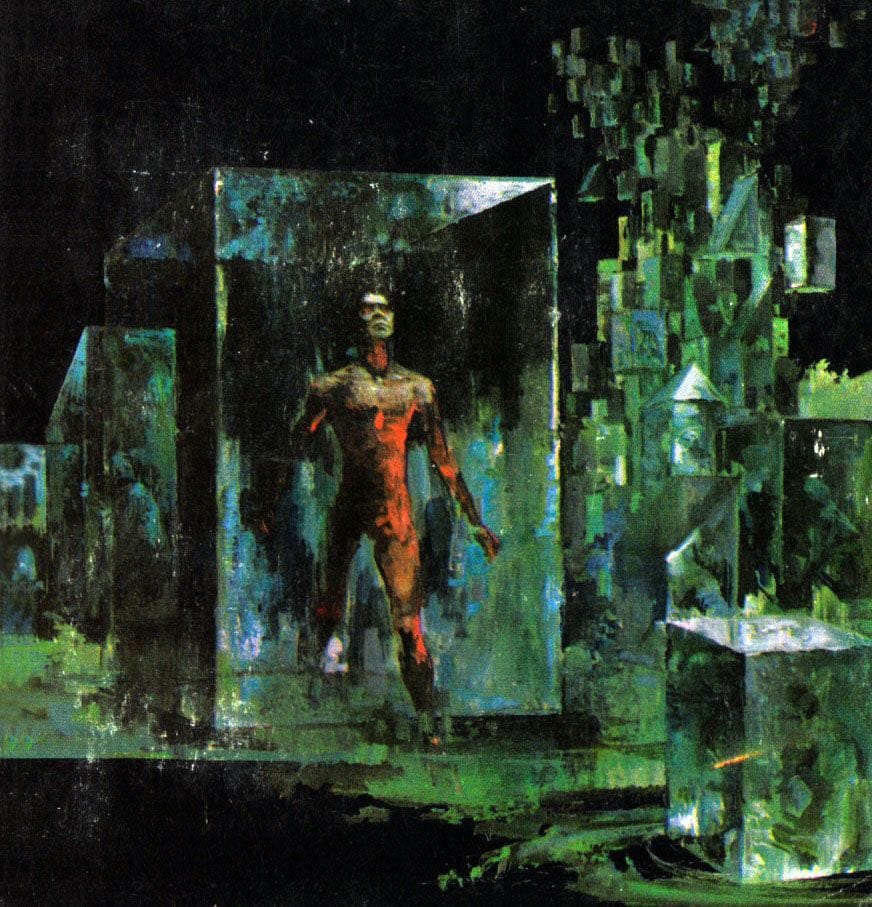
So is Ron Walotsky’s 1972 cover art to Overlay, by Barry N. Malzberg.
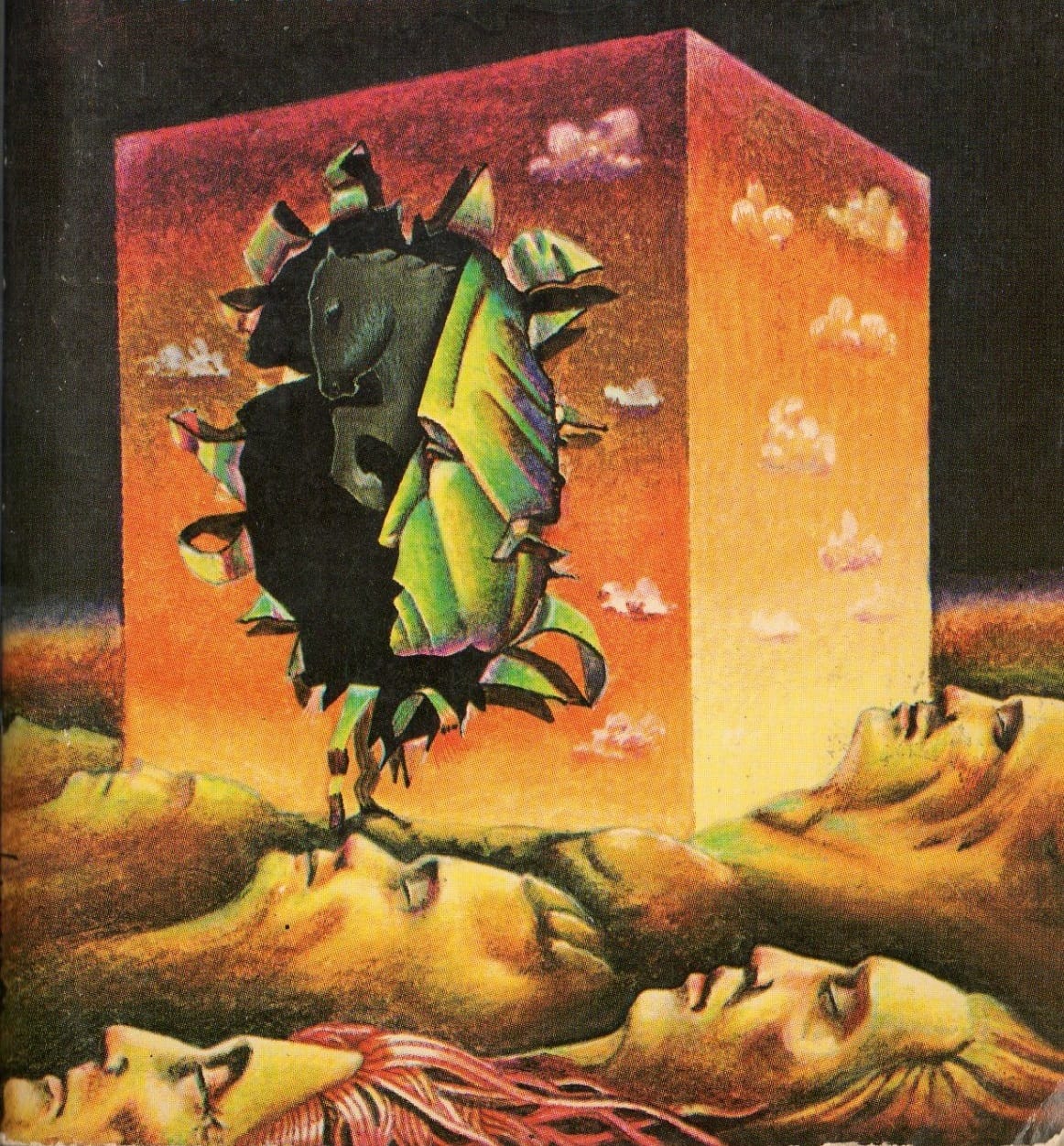
I'm not sure what the meaning behind the flattened cube on Gene Szafran's 1974 cover to Beyond Control, an anthology edited by Robert Silverberg, might be. It's certainly surreal.
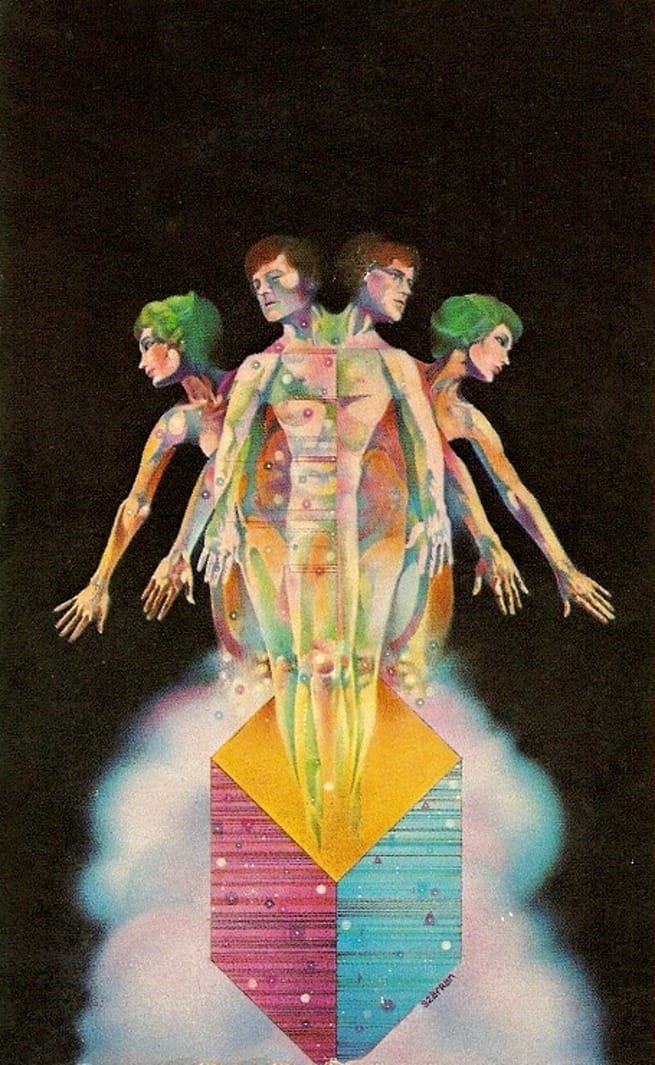
This 1981 Don Ivan Punchatz cover is for An Infinite Summer, by Christopher Priest.
In it, shadowy time travellers "freeze" random people – including the protagonist, right as he's proposing to his girlfriend. Punchatz's use of an ice-cube style box here might be leaning into the "frozen" concept.
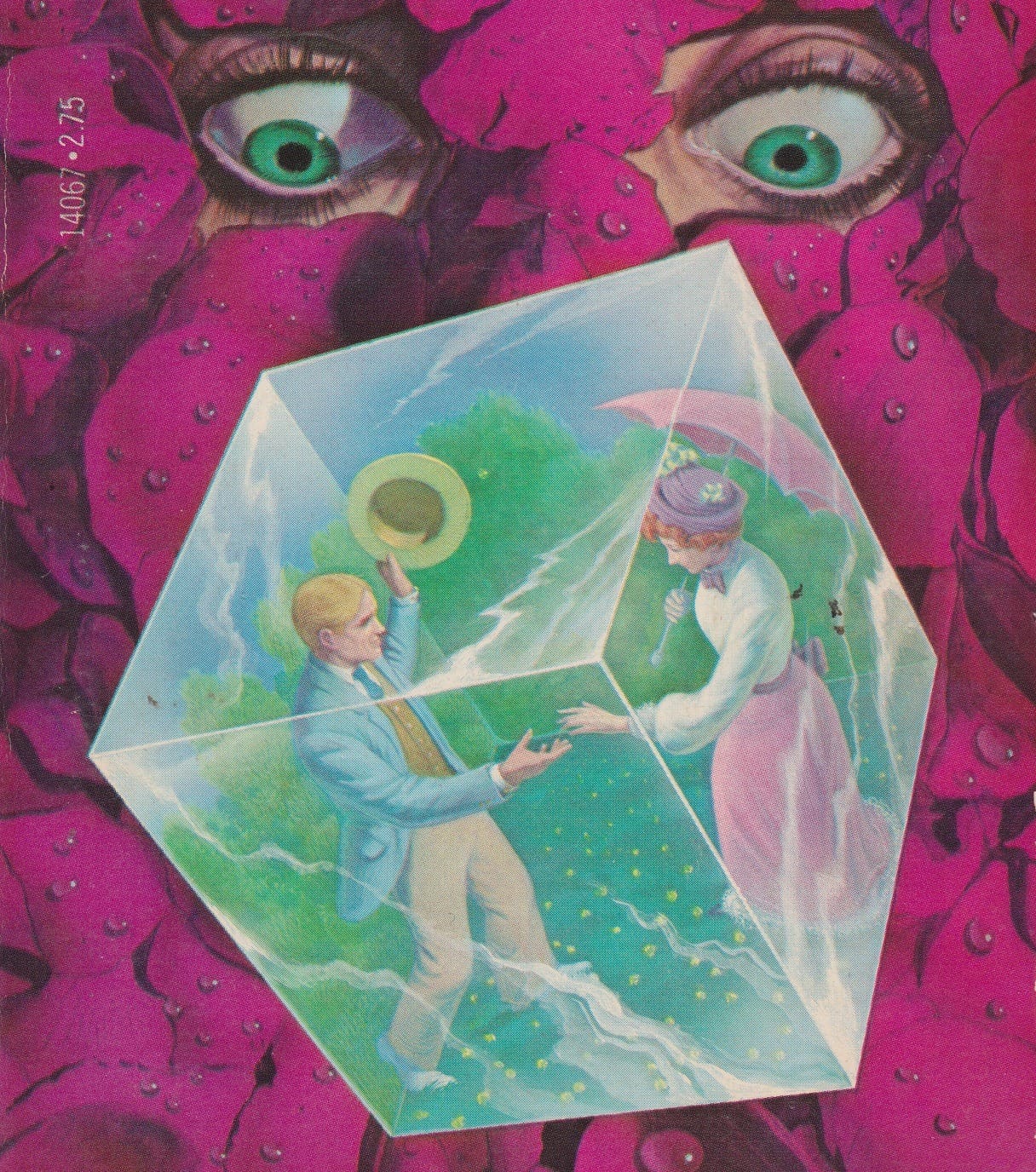
Robert Tinney's June 1985 Byte magazine cover is worth throwing in the mix.
I'm not sure what he's trying to say about programming techniques here, other than that they're a tough puzzle to solve and that Rubix Cubes were trendy.
Maybe he's saying that there are endless permutations? Rubix Cubes apparently have 43 quintillion positions, a number so large that Rubix marketing materials gave up and just say it has "billions" of positions.
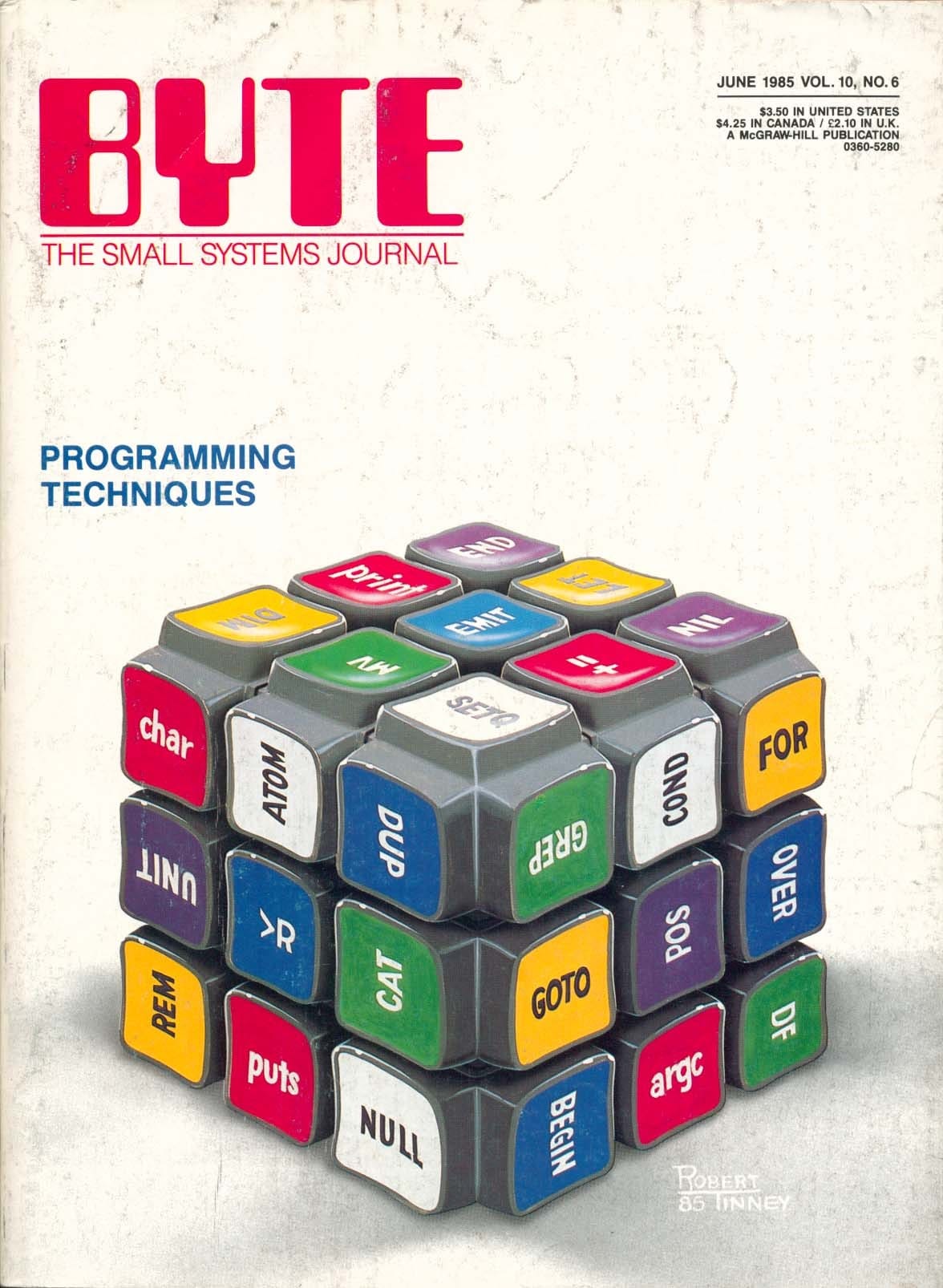
Here's an undated Moebius illustration.
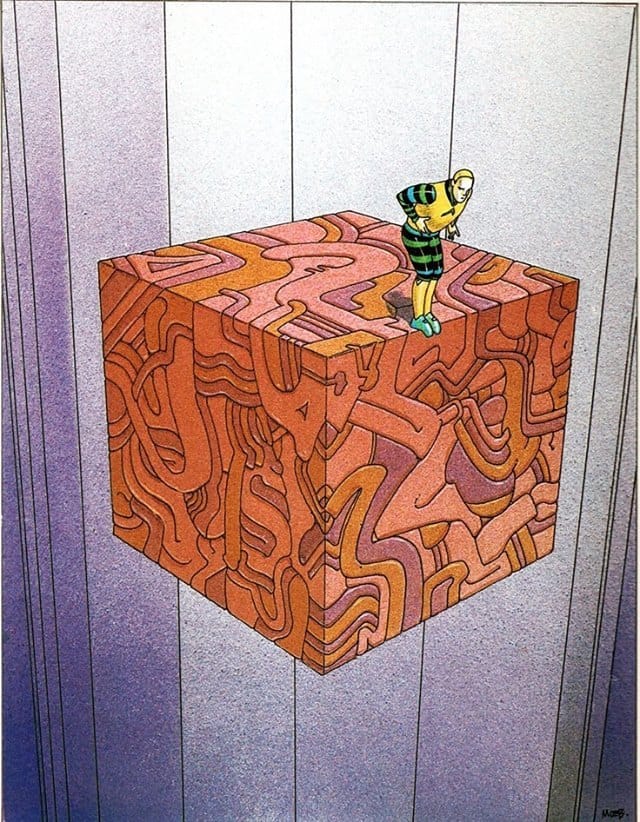
Bob Larkin's dystopian 1977 cover for James E. Gunn's Kampus puts a professor with a cattle prod inside a protective cube ringed by riot guards. What were the students protesting, future genocides?
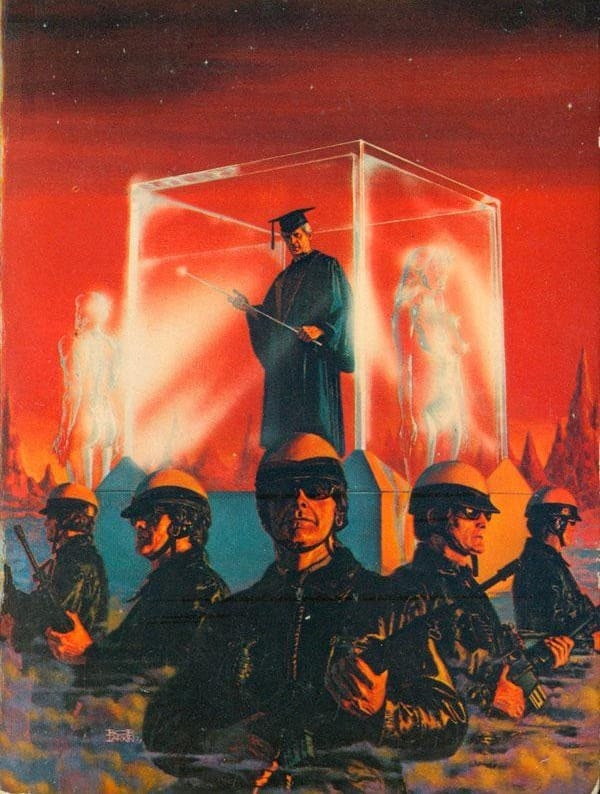
The artist behind this 1972 cover art to Eando Binder's The Mind from Outer Space is uncredited on ISFDB, a website that's essentially a Wikipedia for speculative fiction and is always my first port of call when looking up an artist credit.
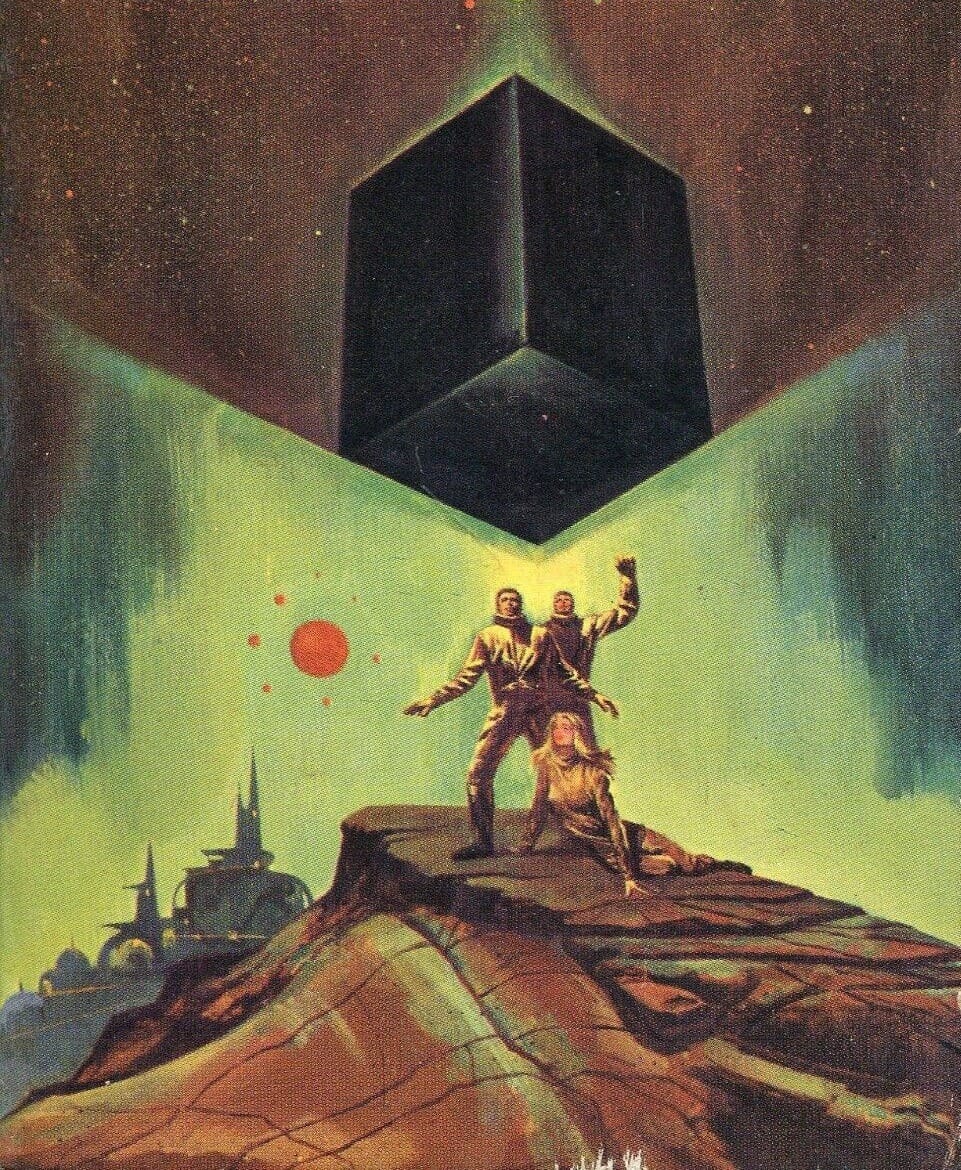
However! The ISFDB editors must have missed this prelim, which is very obviously done for the same cover, and has a clear signature indicating that the artist is Jack Faragasso. Mystery solved.
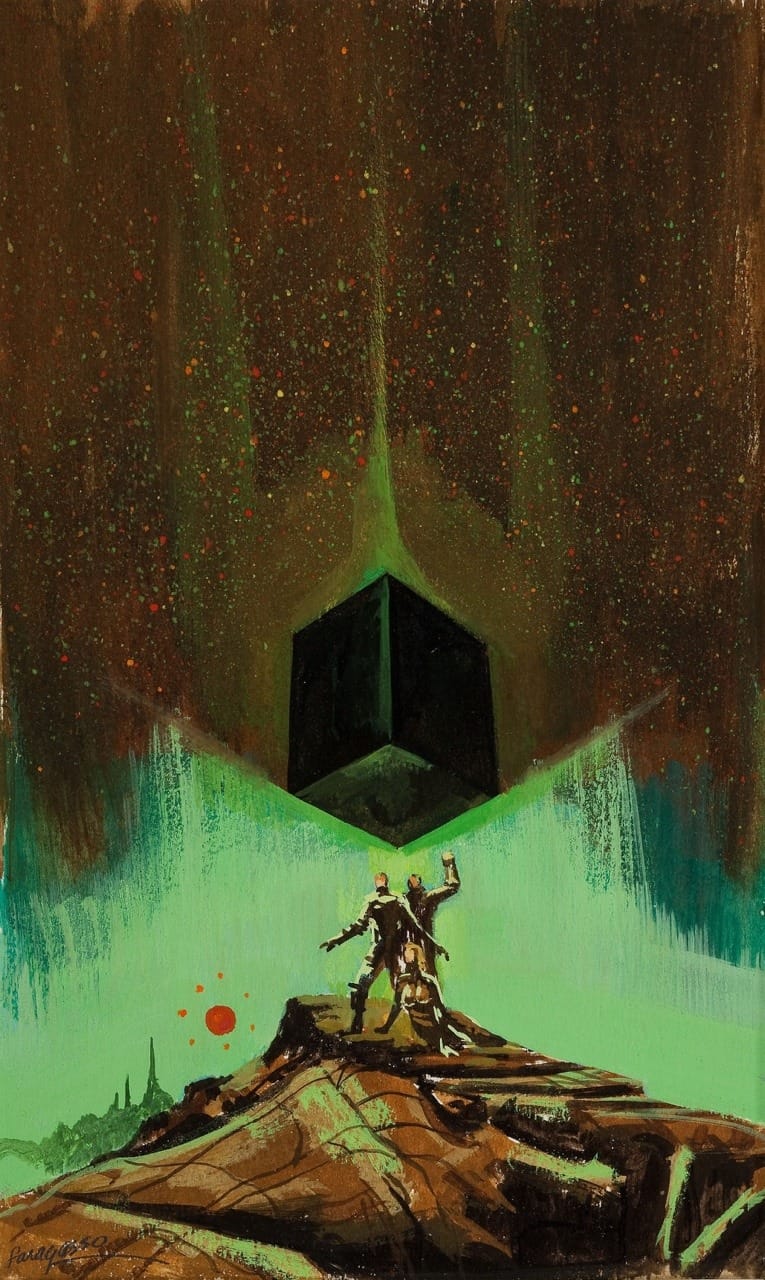
Don Dixon's 1987 cover to The Universe Between, by Alan E. Nourse, is a particularly flashy example of a surreal cube.
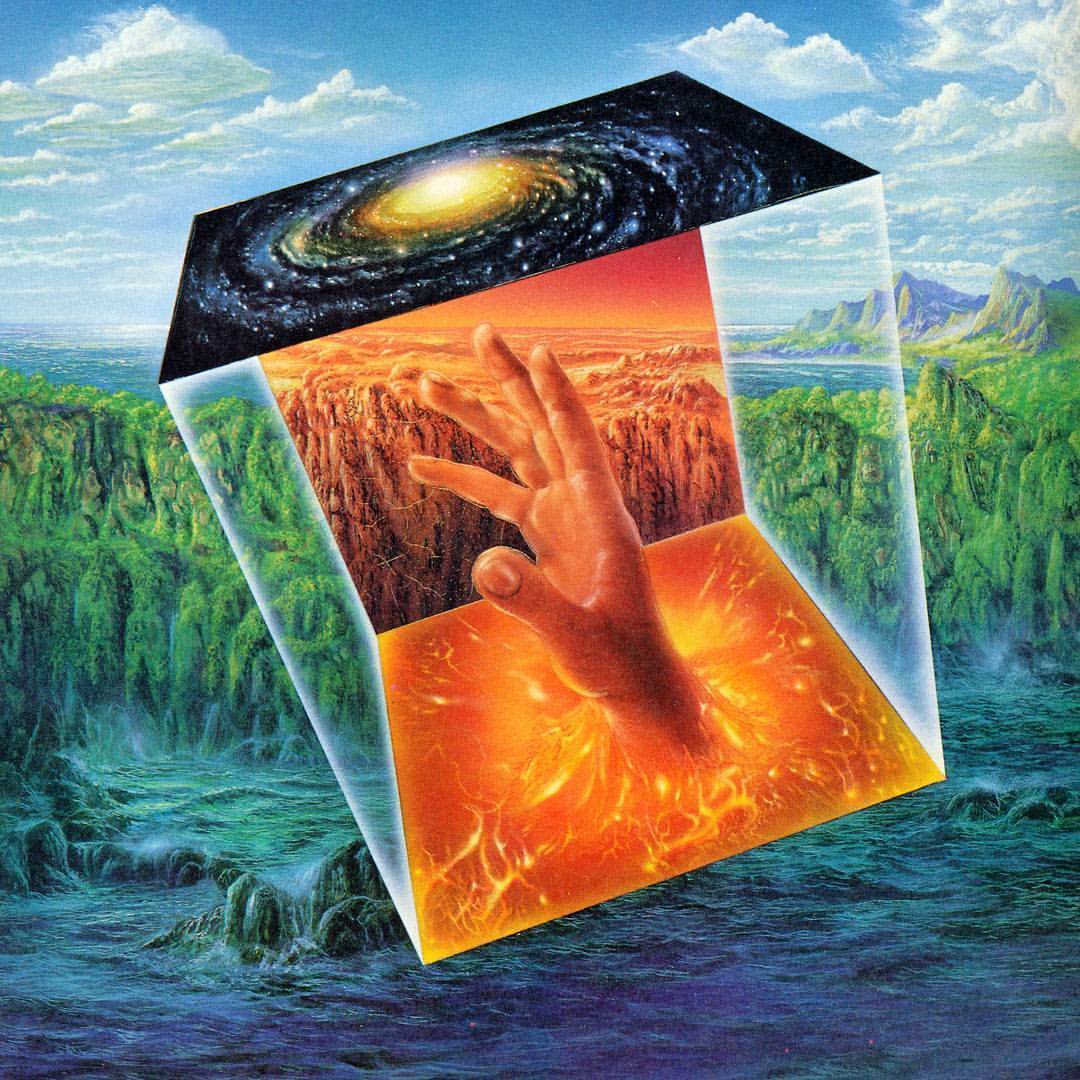
And so is this next one: Paul Lehr makes a repeat appearance with one of the most frenetic cubes, first used as March 1981 cover to Analog magazine.
The orange lightning, purple clouds, rainbow in a mountain range jungle, and mysterious spheres are overwhelming enough, but I also keep mistaking that one long asteroid on the left for a giant finger.
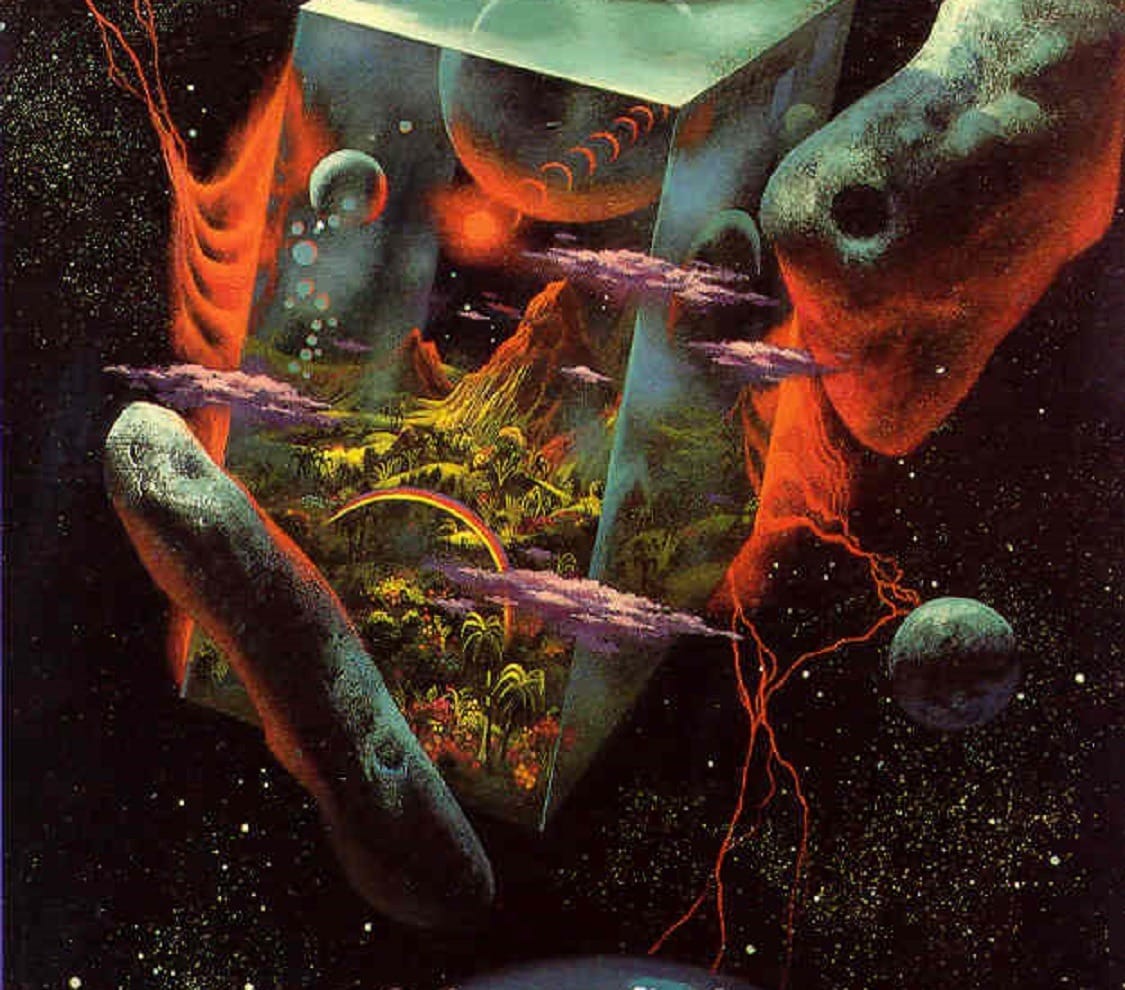
Speaking of fingers, sometimes the cubes actually are small enough to hold.
Ed Emshwiller takes the "Alas, poor Yorick" stance for this illustration, his April 1974 cover to The Magazine of Fantasy and Science Fiction.
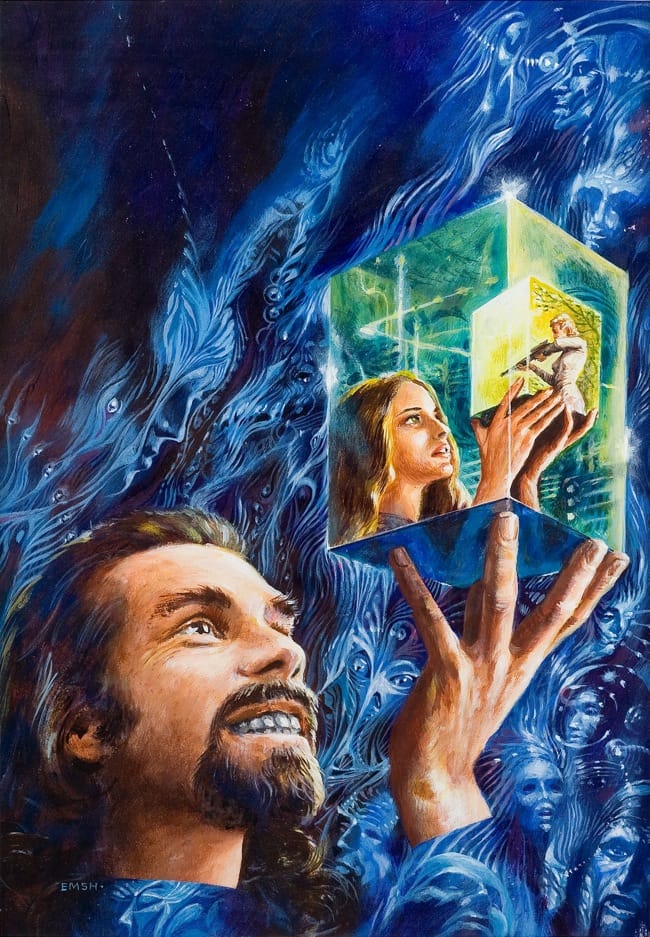
I wonder if Stephen Youll saw that one before doing his 1994 cover to Forward the Foundation, by Isaac Asimov.
Granted, the more obvious inspiration for Youll here would be the similarly swirling galaxy on Michael Whelan's famous Foundation's Edge cover.
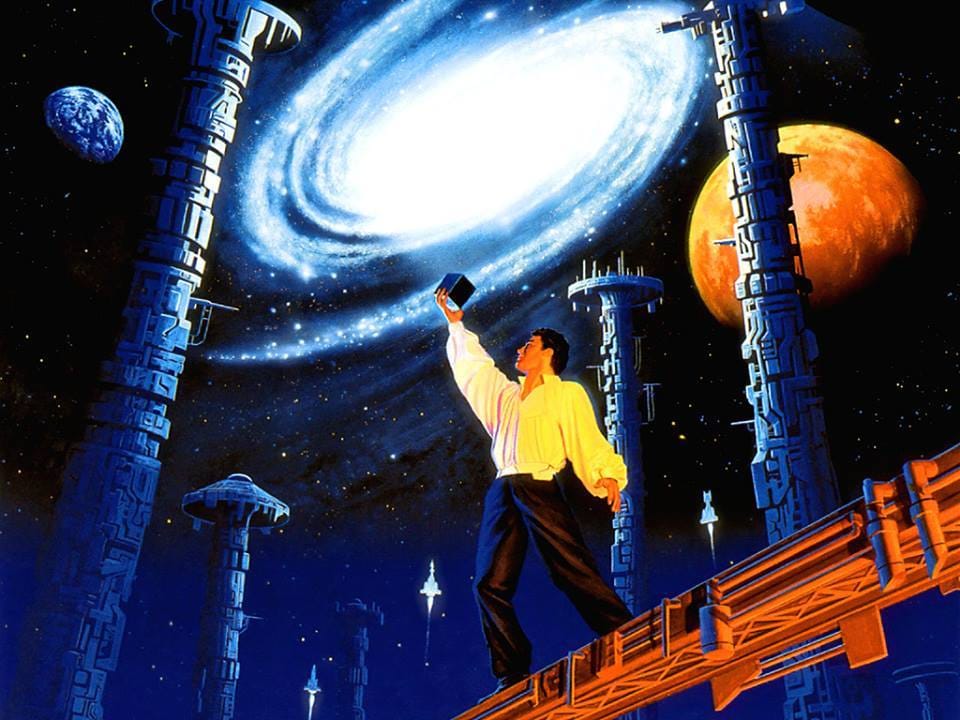
Karel Thole has an entity made out of cubes. Still needs blood vessels, though.
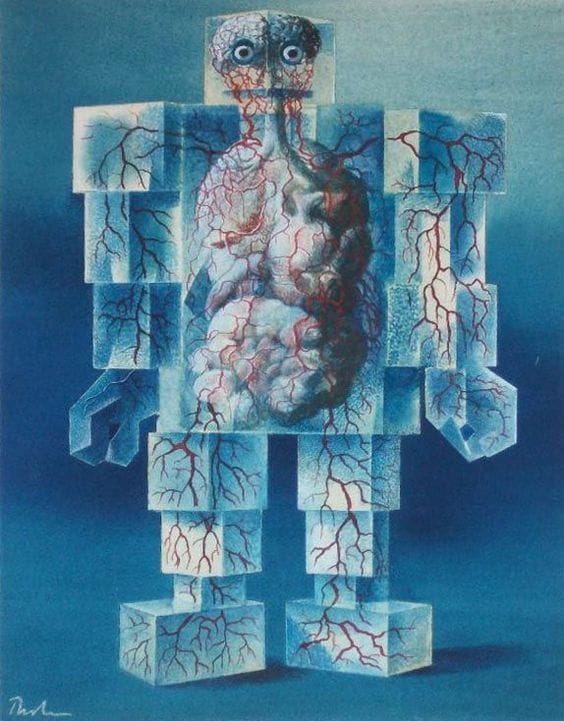
It reminds me a little of the avant-garde helmets sported by the skeletons on Earle Bergey’s April 1948 cover to Thrilling Wonder Stories.
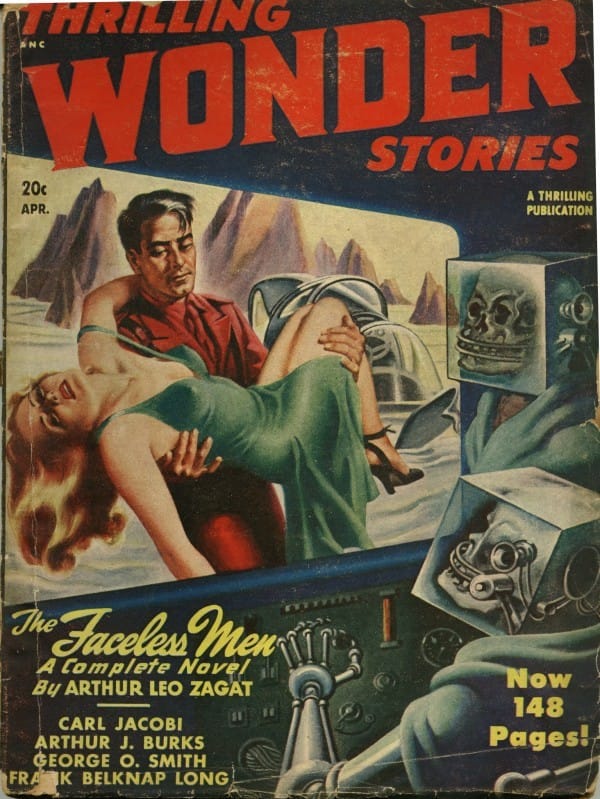
One final trend in cube sci-fi? The planet Earth. Here's the William Crutchfield's cover for The Association's self-titled 1969 album.
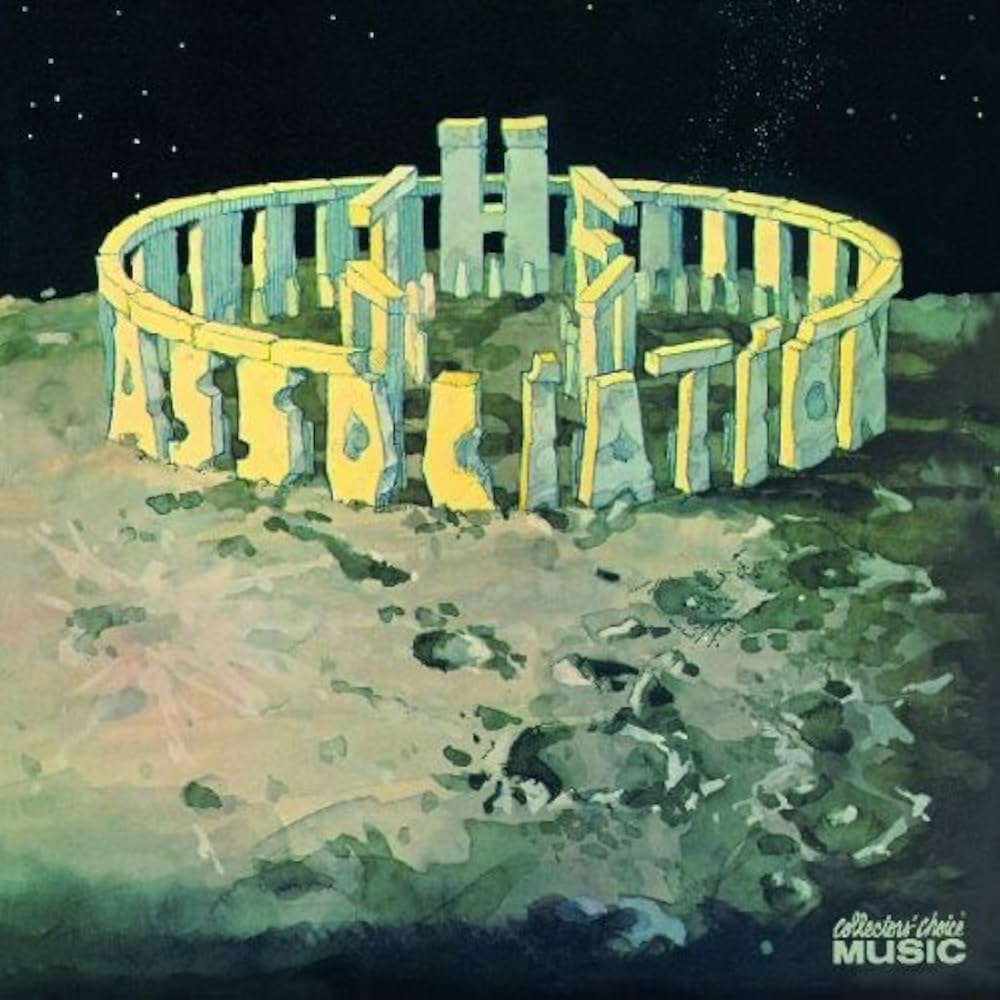
The story comes into focus with the rest of the album's art, however.
And I do mean "focus" metaphorically – this was the best quality image I could find online with a quick search. I'd love a better scan, if any readers can rustle one up!
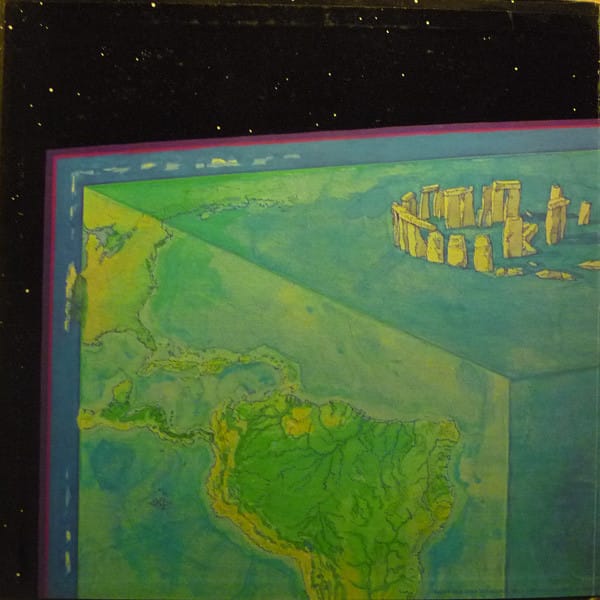
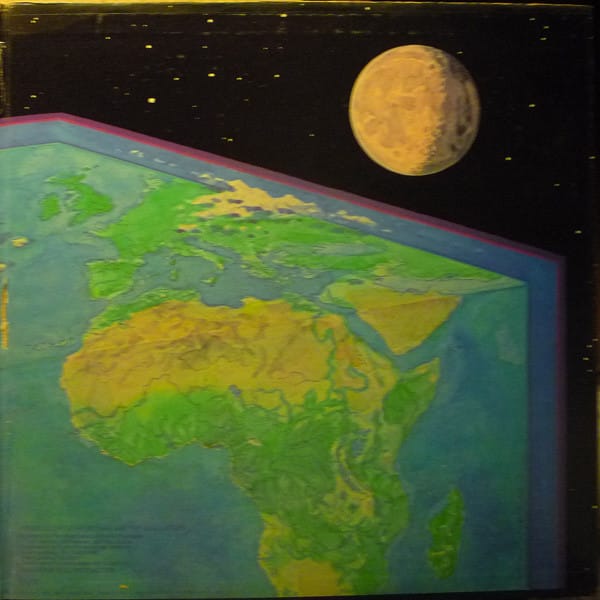
The final image is my favorite.
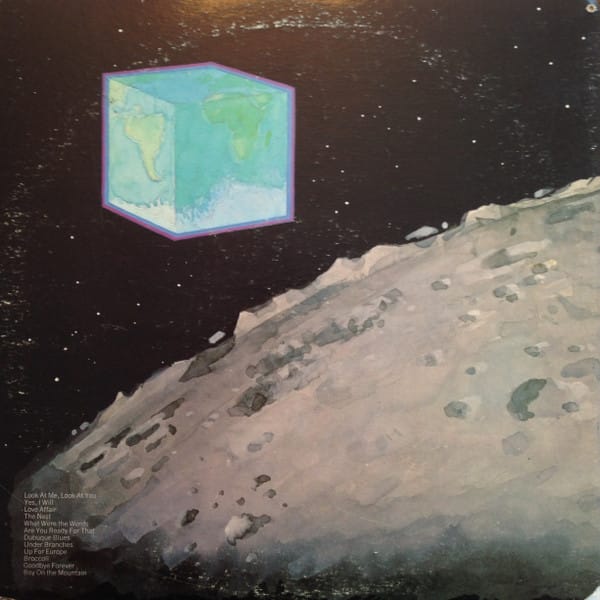
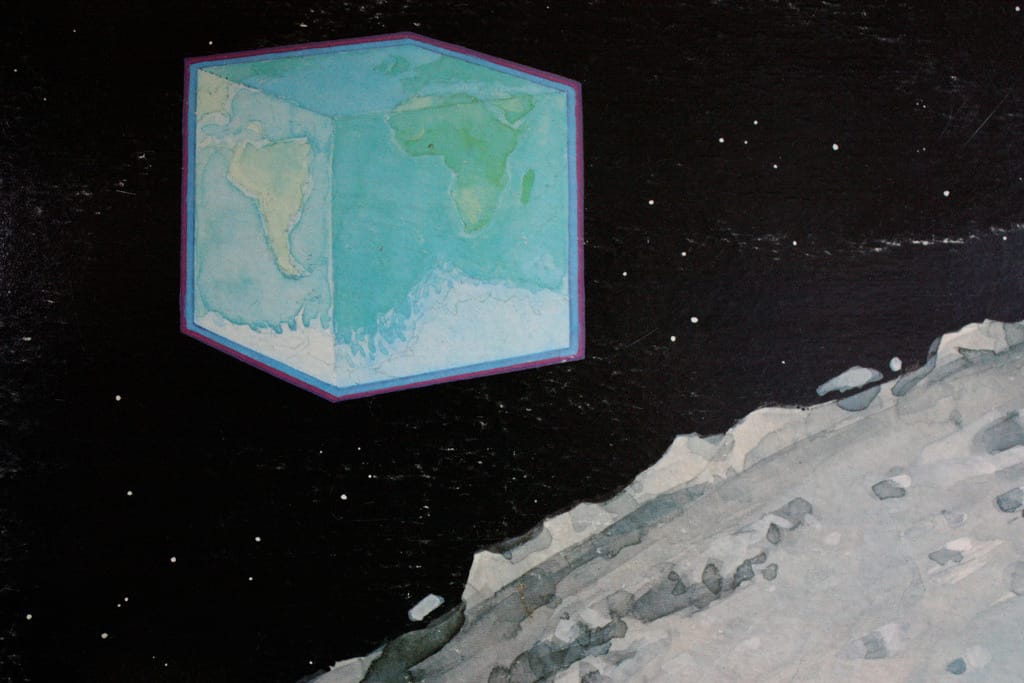
It reminds me of an unrelated work from 15 years earlier. This image occasionally pops up in memes today without any attribution – "the attempt to prove flat earthers wrong just confused everyone," stuff like that.
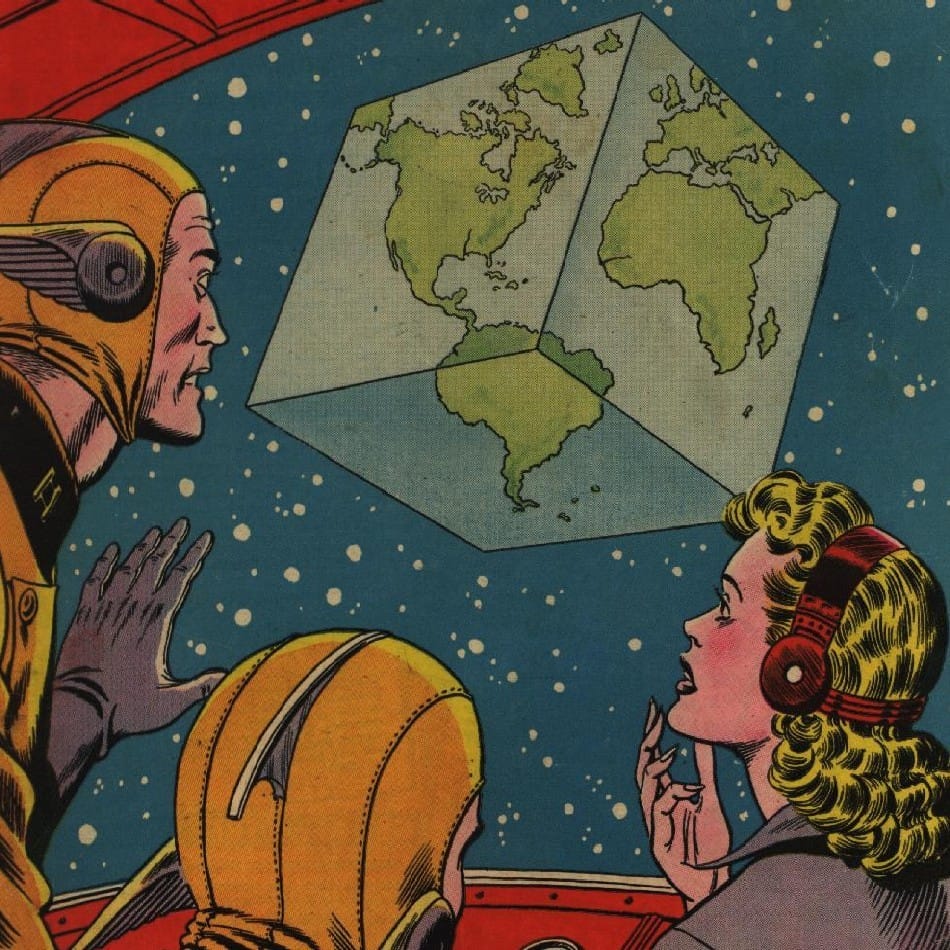
It's by Murphy Anderson, done as cover art for Mystery in Space #22, Oct 1954, to illustrate "The Square Earth," written by Otto Binder.
Otto's claim to fame is that he created Supergirl, but if you scroll up in this post, you'll find he's already made one appearance. The sci-fi paperback author "Eando" Binder is a pen name for works Otto wrote in collaboration with his brother Earl. Get it, E and O?
Cool Links
A Few Good Reads - The Future, Now and Then
This post opens with some smart political analysis, but if you scroll halfway down, you'll find the real reason I'm sharing it: A look at a new revival of In Formation magazine, a tech-magazine-slash-art-installation with the unbeatable tagline of "Every day, computers are making people easier to use." The whole cover's great, too; check this out:
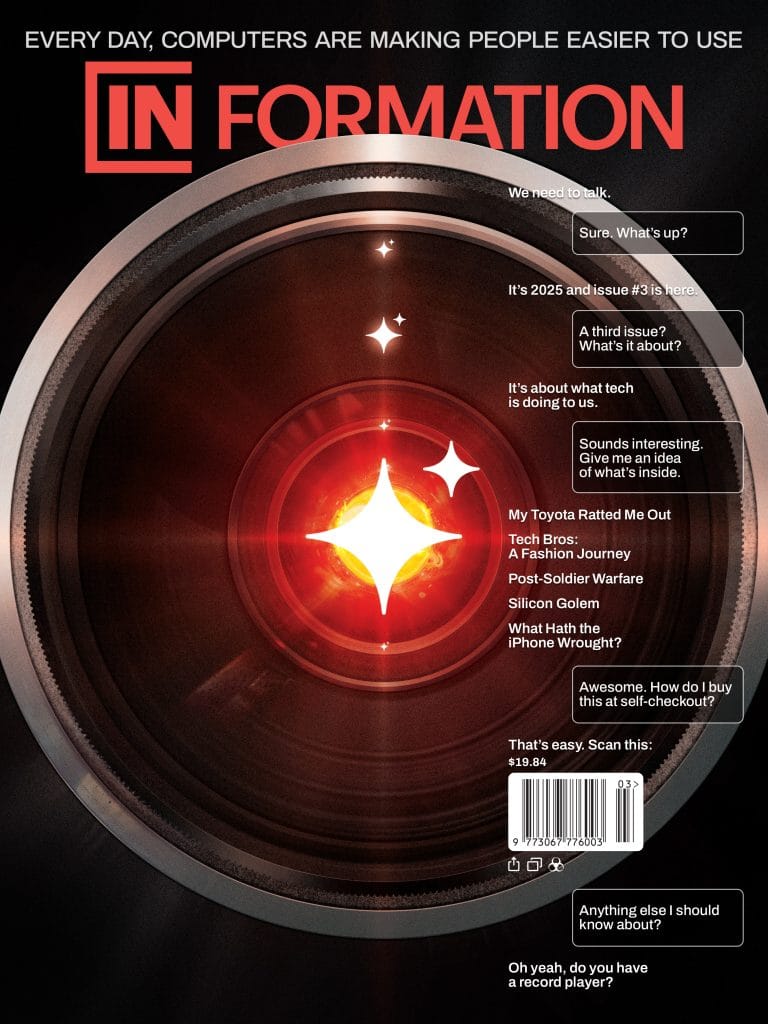
Horror Artist Profile: Bob Larkin (1949– ) - Unobtainium 13
Cool roundup of horror poster art by Bob Larkin. I gotta do a post on Larkin's amazing Planet of the Apes comic book covers some time.
Introducing Local Files Club - Nightwater
This guy's creating a publishing label for selling albums of audio fiction complete with bonus features. Fun idea and hopefully the sort of new project that can thrive as people continuing drifting away from social media.
October Q&A with Michael Whelan
I got a shout-out in the latest email from storied artist Michael Whelan!
Someone asked about the most surprising secondary uses of his artwork over the years, and he mentioned a 2020 Louis Vuitton fashion campaign that licensed his work, linking to an article I wrote for Forbes, where I used to cover the publishing industry.
Music rec: Possibly my favorite music mix series of all time is the "It Came from the 80s" series of horror-themed dark-retro-synthwave, by Confused bi-Product of a Misinformed Culture. You can find most of those mixes on their YouTube here, and I think this Soundcloud playlist has the entire collection.
Next Time: A Very 70s Sci-Fi Art Halloween